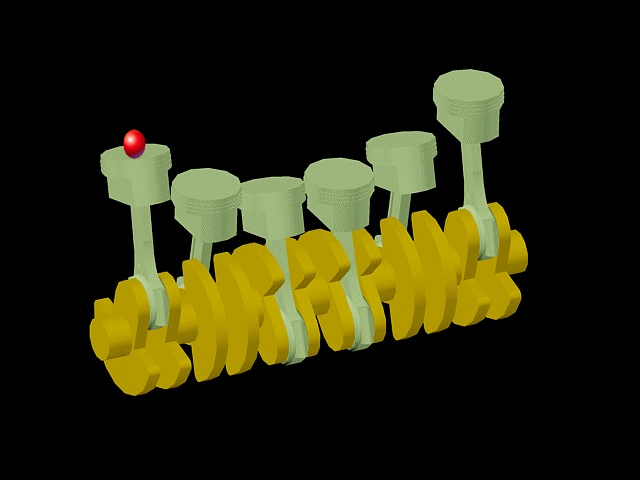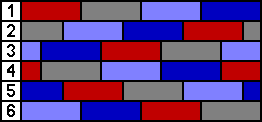Six Cylinder V-In-line-engine

Function
What is a VR engine? It is an in-line engine which was trimmed to a compact size to fit into the vehicle transversely. Therefore, it is available with 5 and 6 cylinders. How do you push cylinders into one another? You
move the first cylinder a little to the right, the next one a little to the left etc. Thus, cylinders with 15° incline between one another emerge, and recently also with 10.6°. It is important that the main axis of the crankshaft
does no longer have an intersection with the centre axes of the cylinders. The VW engine of the first generation has middle axis of the cylinders which pass by the crankshaft axis at a distance of 12,5 mm to the left or to
the right. An axially offset is no longer necessary for the pistons of one side and not possible on the other side. The compact longitudinal dimension is also established for all VR engines, in addition, due to a relatively
small drilling, these engines are designed rather with a long stroke.
Today's VR engines are developed by VW. Though its construction goes back to the Lancia Lambda introduced in 1922, only the low cylinder angle is similar. Every header of the crankshaft fits exactly to the
corresponding cylinder. Thus, there are no variations in the length of the strokes.

How it works
If you want to know the numbering of the cylinders and the firing order, take as a starting point the in-line engine. The cylinder head works according to the cross-flow principle, inlets and outlets on different sides. The
somewhat problematic longer suction ways of the cylinders 2, 4 and 6 are compensated by different cross sections. Picture 1 shows how compactly six cylinders can be arranged. However, a peak into the most right
cylinder also shows how narrow the connecting rod bearings are. The pistons have notches for four valves and big hollows for the air duct in case of a direct injection system.
The cylinder head (not fastened) in picture 3 requires a more detailed observation to identify it as an upper top of a VR engine, because it is so similar to that of an in-line engine with double overhead camshafts, four
valves and roller drag levers. Only the shifting of the spark plug drillings indicates differences.
The differently long suction ways in the cross flow head are not the only problem of this engine. The bigger the angle of the cylinders to one another is, the more different are the movements from TDC to BDC and vice
versa. Please imagine a crankshaft of any crank mechanism would be moved to the left. If the engine now turns clockwise, the rising strokes compression and exhaust are longer and the other two strokes are
accordingly shorter. For the three other cylinders it is exactly the opposite. The question remains whether the valve timing is the same for all cylinders of this engine? 05/08
Firing order: 1 5 3 6 2 4
(crankshaft comparable to in-line engines) |
|